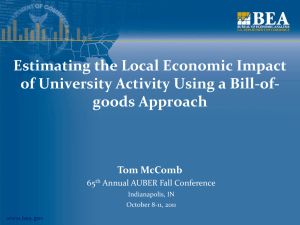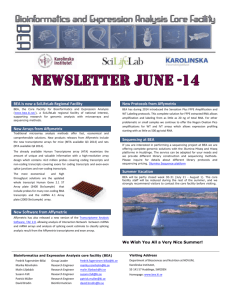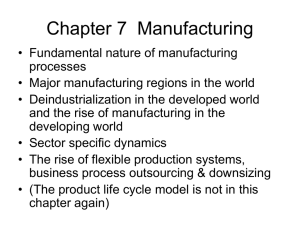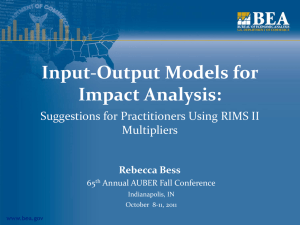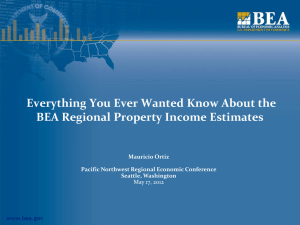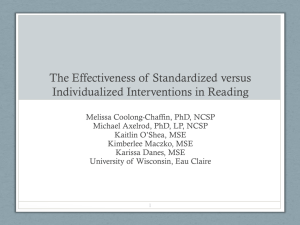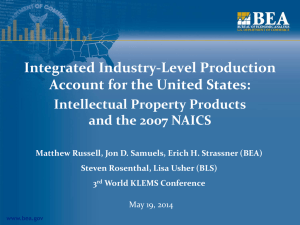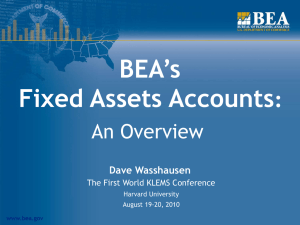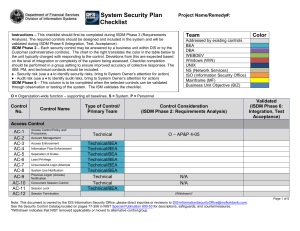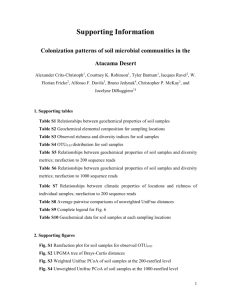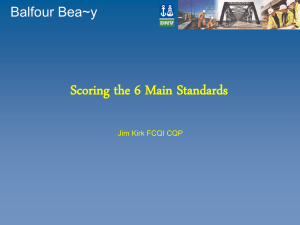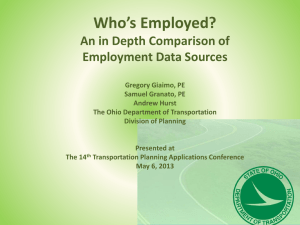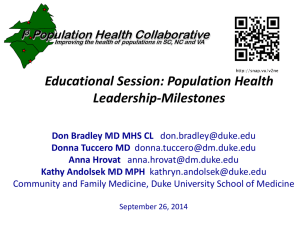BEA Economic Areas Aligning Workforce
advertisement
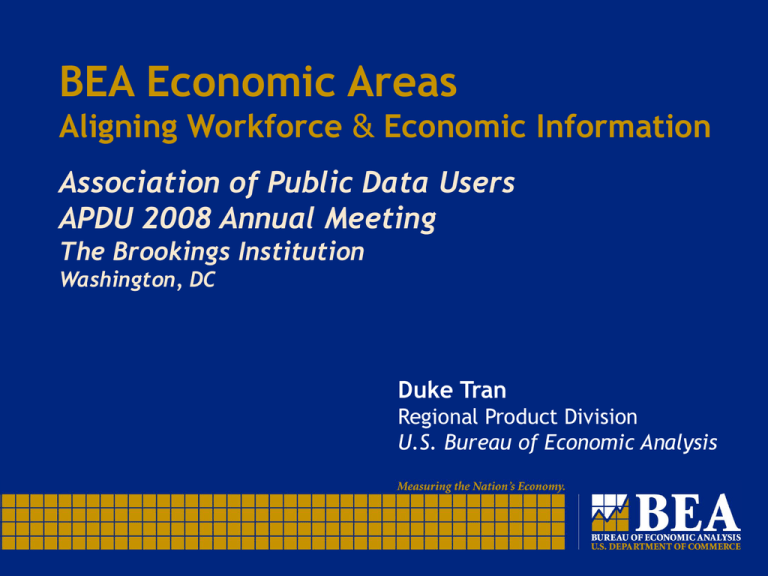
BEA Economic Areas Aligning Workforce & Economic Information Association of Public Data Users APDU 2008 Annual Meeting The Brookings Institution Washington, DC Duke Tran Regional Product Division U.S. Bureau of Economic Analysis Presentation Overview What are BEA Economic Areas? Who uses them? What is the plan for future redefinition? Needs for new data sources www.bea.gov 2 U.S. Bureau of Economic Analysis Mission: Promote a better understanding of the U.S. economy by providing the most timely, relevant, and accurate economic accounts data in an objective and cost-effective manner Role: The Nation’s economic accountant for National, International, Industry, and Regional accounts Products: GDP, Personal Income, Corporate Profits, Balance of Payments, Input-Output Tables, Travel and Tourism, etc. www.bea.gov 3 BEA’s Regional Accounts Role: Provide users a consistent framework to study detailed geographic distribution of U.S. economic activity and growth nationwide Products: GDP by State and Metropolitan Area Personal Income by State and Local Areas Economic Multipliers BEA Economic Areas www.bea.gov 4 What Are BEA Economic Areas? BEA Economic Areas define the relevant regional markets surrounding metropolitan areas Each area consists of a central market area and surrounding counties that are economically related to the central area Current set, redefined in 2004, 179 areas www.bea.gov 5 Geography Hierarchy 3,141 counties in the 2000 Census: OMB’s definition: Core Based Statistical Areas(939) Metropolitan Statistical Areas (363) Micropolitan Statistical Areas (576) Combined Statistical Areas (123) BEA Economic Areas: Component Economic Areas (344) BEA Economic Areas (179) www.bea.gov 6 The Process www.bea.gov 7 Benefits of Using BEA EA’s EAs provide a useful alternative geography to metropolitan areas because EAs cover all counties in the Nation EA’s county aggregations are useful for both research and production purposes www.bea.gov 8 Uses of BEA Economic Areas BEA’s Regional program Other Federal government agencies Local and regional authorities Private and academic researchers www.bea.gov 9 The Challenge ─ Data Availability Availability: Elimination of the long form in the 2010 Census Alternative sources: American Community Survey Local Employment Dynamics www.bea.gov 10 American Community Survey (ACS) Replacing long form in the decennial censuses: Availability Geographies Using ACS to redefine BEA EAs: Benefits Challenges www.bea.gov 11 Local Employment Dynamics (LED) What is Local Employment Dynamics? LED’s tools and datasets LED’s data characteristics www.bea.gov 12 LED’s Benefits / Issues BENEFITS Current Population vs. sample Integrated and consistent Linkages to other data www.bea.gov ISSUES LED employment data exclusions LED not yet national in scope. LED partnership 13 Next Steps Compare results from the new data sources Prepare analysis to address: ACS & LED strengths and weaknesses Geographic details Commuting home-to-work Socioeconomic characteristics Annual and multi-year data summaries www.bea.gov 14 More Information, Questions? Duke Tran Regional Product Division U.S. Bureau of Economic Analysis Washington, DC 20230 202.606.9230 Duke.Tran@BEA.gov www.bea.gov 15
